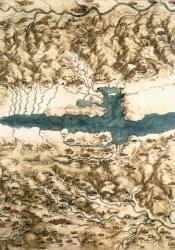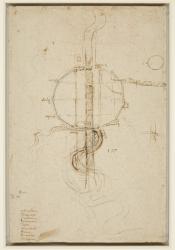Florence, Italy
Here, Da Vinci did is first works representing space as 3 dimensional and was possibly hired by the city itself to create maps for a canal. As Da Vinci's first home, Florence had a lasting impact on him and the work he did in cartography.
Parent Map
Coordinates
Latitude: 43.769560400000
Longitude: 11.255813600000
Longitude: 11.255813600000

![La Valle Dell'Arno https://www.leonardodavinci.net/landscape-drawing-for-santa-maria-della-neve.jsp#prettyPhoto[image1]/0/](https://editions.covecollective.org/sites/default/files/styles/gallery_small/public/chronology-uploads/Valley%20Arno_0.jpg?itok=7TfrEhWV)

